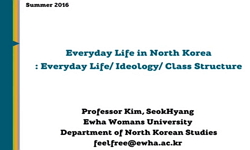The mission of National Health Screening Program for Infant and Children is to promote and improve the health, education, and well-being of infants, children, families, and communities. Although the term 'diagnosis' usually relates to pathology, a sim...
http://chineseinput.net/에서 pinyin(병음)방식으로 중국어를 변환할 수 있습니다.
변환된 중국어를 복사하여 사용하시면 됩니다.
- 中文 을 입력하시려면 zhongwen을 입력하시고 space를누르시면됩니다.
- 北京 을 입력하시려면 beijing을 입력하시고 space를 누르시면 됩니다.
https://www.riss.kr/link?id=A106332242
-
저자
은백린 (고려대학교) ; 김성우 (국민건강보험공단 일산병원) ; 김영기 (국민건강보험공단 일산병원) ; 김정욱 (서울대학교) ; 문진수 (인제대) ; 박수경 (한림대) ; 성인경 (가톨릭대학교) ; 신손문 (관동대학교) ; 유선미 (인제대) ; 은소희 (고려대학교) ; 이혜경 (서울보훈병원) ; 임현택 (울산대학교) ; 정희정 (국민건강보험공단 일산병원) ; Eun, Baik-Lin ; Kim, Seong Woo ; Kim, Young Key ; Kim, Jung Wook ; Moon, Jin Soo ; Park, Su Kyung ; Sung, In Kyung ; Shin, Son Moon ; Yoo, Sun Mi ; Eun, So Hee ; Lee, Hea Kyoung ; Lim, Hyun Taek ; Chung, Hee Jung
- 발행기관
- 학술지명
- 권호사항
-
발행연도
2008
-
작성언어
Korean
- 주제어
-
등재정보
SCOPUS,KCI등재,ESCI
-
자료형태
학술저널
- 발행기관 URL
-
수록면
225-232(8쪽)
- DOI식별코드
- 제공처
-
0
상세조회 -
0
다운로드
부가정보
다국어 초록 (Multilingual Abstract)
The mission of National Health Screening Program for Infant and Children is to promote and improve the health, education, and well-being of infants, children, families, and communities. Although the term 'diagnosis' usually relates to pathology, a similar diagnostic approach applies to the child seen primarily for health supervision. In the case of health, diagnosis determines the selection of appropriate health promoting and preventive interventions, whether medical, dental, nutritional, educational, or psychosocial. Components of the diagnostic process in health supervision include the health 'interview'; assessment of physiological, emotional, cognitive, and social development (including critical developmental milestones); physical examination; screening procedures; and evaluation of strengths and issues. Open and informed communication between the health professional and the family remains the most significant component of both health diagnosis and health promotion. Families complete medical history forms at their health supervision visit. Family-friendly questionnaires, checklists, and surveys that are appropriate for the child's age are additional tools to improve and update data gathering. This type of information helps initiate and inform discussions between the family and the health professional. This article provides a comprehensive review of current National Health Screening Program for Infant and Children in Korea.
동일학술지(권/호) 다른 논문
-
한국인 신생아 황달과 Glutathione S-transferase 다형성에 관한 연구
- 대한소아청소년과학회
- 강창석
- 2008
- SCOPUS,KCI등재,ESCI
-
Utility of a forced expiratory flow of 25 to 75 percentas a predictor in children with asthma
- 대한소아청소년과학회
- 강정완
- 2008
- SCOPUS,KCI등재,ESCI
-
프래더 윌리 증후군의 유전학적 발병 기전에 따른 표현형 및성장 호르몬 치료 효과에 관한 연구
- 대한소아청소년과학회
- 배근욱
- 2008
- SCOPUS,KCI등재,ESCI
-
A case of lethal kwashiorkor caused by feeding only with cereal grain
- 대한소아청소년과학회
- 이현주
- 2008
- SCOPUS,KCI등재,ESCI






 ScienceON
ScienceON



